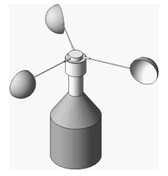
Source: Anemometer, WP Clipart
In this section we will look at some specific equipment used in 8th grade science.

Source: Anemometer, WP Clipart
An anemometer is used to measure wind speed. Cup anemometers are the most widely used anemometers. They are made of three to four hemispherical cups that form a cross if viewed from above. When the wind catches the cups, it causes them to spin, and the number of times the cups rotate completely around is the wind speed measured in rpms (revolutions per minute).
![]() Watch this short video clip to see an anemometer at work.
Watch this short video clip to see an anemometer at work.
Source: Weather Station, Anemometer
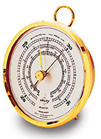
Source: Scientists Barometer, Nasco
A barometer is a scientific instrument used in meteorology to measure atmospheric pressure. Air pressure is measured in units called millibars.
There are two main types of barometers.
Mercury barometers are made from glass tubes. With one end sealed, the barometer tube is filled with mercury. Atmospheric pressures push down on the mercury reservoir, which forces mercury up into the column. As pressures decrease, the atmospheric weight on the reservoir decreases, and the mercury column shrinks. As pressures increase, the column goes up.
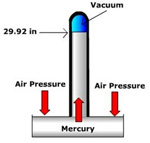
Source: Mercury Barometer, Barometer Planet
The second type of barometer is an aneroid barometer. Aneroid barometers contain beryllium and copper. The images below show the inside mechanism of an aneroid barometer.

Source: Aneroid barometer, Australian Government Bureau of Meteorology
![]() Watch this video to learn how barometers work.
Watch this video to learn how barometers work.
Source: Weather Barometers: How Does a Barometer Work, Ehow, YouTube
Weather and atmospheric pressure are closely related. Barometers play a crucial role in predicting weather. High readings on barometers mean there are high pressures in the area which means stable weather. When a barometer drops, that means a stormy low pressure cell is moving in.
Barometers often have 2 scales on them, both of which indicate air pressure. One scale measures millibars (mb) and the other scale measure the amount of mercury. The amount of mercury can be represented in inches or millimeters. Standard pressure at sea level is 1013.2 millibars or 29.92 inches (760 millimeters) of mercury. Look at the two images below. The first image shows a barometer with millibars and millimeters of mercury. The second one shows a barometer with millibars and inches of mercury.
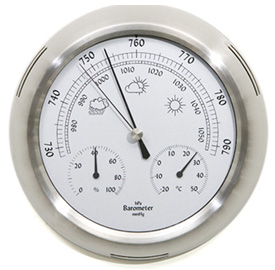
Source: Precision Barometer, Product Review
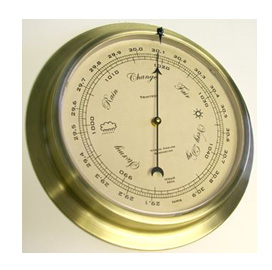
Source: Barometer, Dealers Advantage
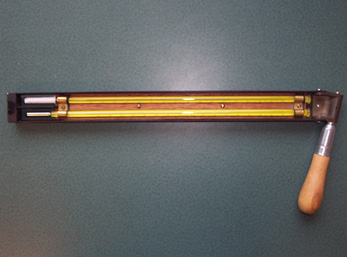
Sling Psychrometer, CambridgeBayWeather, Wikipedia
A psychrometer or sling psychrometer is a device used to measure relative humidity. It has two thermometers. One thermometer is called a wet-bulb thermometer. The bulb of the wet-bulb thermometer is covered with a damp cloth. The sling psychrometer is whirled around, using the handle. As the instrument is whirled, water evaporates from the cloth on the wet-bulb thermometer and cools the thermometer. This value is known as the wet-bulb temperature. The drier the air, the more quickly the thermometer cools and hence, the lower the wet-bulb temperature. If the humidity is high, only a small amount of water will evaporate and there will be little change in temperature. The other thermometer is a dry-bulb thermometer and measures air temperature. The difference in temperature reading between the wet-bulb and dry-bulb thermometers indicates the amount of water vapor in the air. A table like the one below is used to determine the relative humidity.
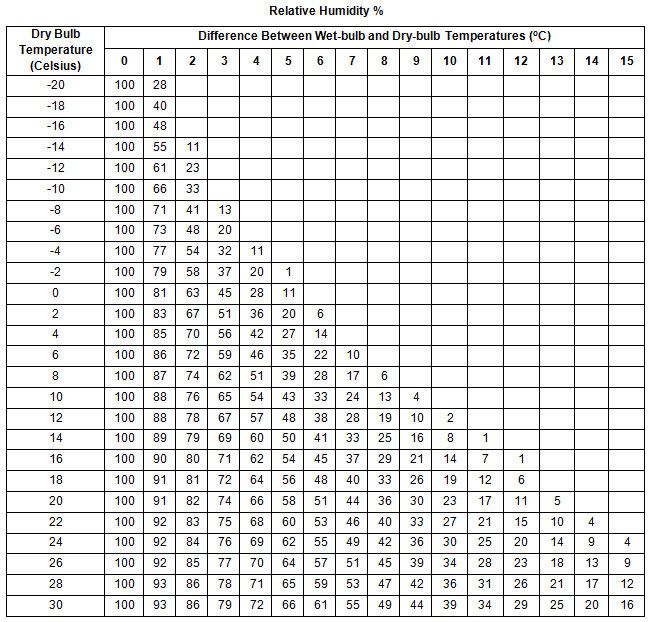
![]() Watch this video to see how to use a sling psychrometer and the table to find relative humidity.
Watch this video to see how to use a sling psychrometer and the table to find relative humidity.
Measuring Relative Humidity, tbone0155, YouTube
![]() Use the pictures below and the chart above to determine the relative humidity.
Use the pictures below and the chart above to determine the relative humidity.

Source: Spring Scale, Nasco
A spring scale is simply a spring fixed at one end with a hook to attach an object at the other. Spring scales are used to measure the force of a load. Spring scales measure the downward pull due to the Earth’s gravitational force of attraction, which is measured in units called newtons. Other spring scales measure in grams (g). The gram scale measures the mass of objects. Some spring scales have the newton scale on one side and the gram scale on the other.
Notice on the images below the smallest unit is at the top of the scale. This is different than a thermometer or a graduated cylinder. Remember a spring scale works by hooking the object on the hook and pulling down.
![]() Practice reading the two spring scales below.
Practice reading the two spring scales below.
A spectroscope is an instrument used to measure properties of light over a specific portion of the electromagnetic spectrum. Spectroscopes are often used in astronomy and some branches of chemistry to measure wavelength. The scientific technique that utilizes the spectroscope is called spectroscopy. A spectroscope works by breaking light into the wavelengths (or spectra) that make it up. Simple spectroscopes contain prisms.
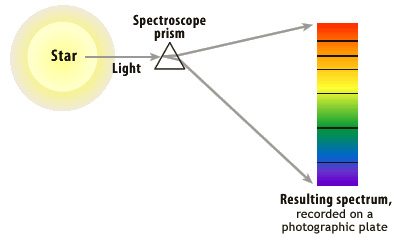
Source: Spectroscope Prism, Amazing Space